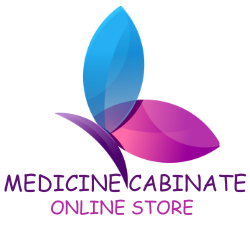Blog
Activated Charcoal: Natural Medicines Comprehensive Database
Drugs → Herbs and Supplements → Activated Charcoal
Activated Charcoal
What is it?
Activated charcoal has pores that can trap chemicals. It is typically taken by mouth as a treatment for some swallowed poisons. There is little evidence for other uses.
Charcoal is made from peat, coal, wood, coconut shell, or petroleum. Activated charcoal is made by heating charcoal in the presence of a gas. This process causes the charcoal to develop lots of internal spaces or pores. These pores help activated charcoal trap chemicals.
Activated charcoal is commonly used to treat poisoning. It is also used for high cholesterol, hangovers, and upset stomach, but there is no strong scientific evidence to support most of these uses.
How effective is it?
Natural Medicines Comprehensive Database rates effectiveness based on scientific evidence according to the following scale: Effective, Likely Effective, Possibly Effective, Possibly Ineffective, Likely Ineffective, Ineffective, and Insufficient Evidence to Rate.
The effectiveness ratings for ACTIVATED CHARCOAL are as follows:
Possibly effective for…
- Poisoning. Taking activated charcoal by mouth is useful for trapping drugs and other types of chemicals to stop poisoning. It should be used under the guidance of a healthcare provider along with standard treatments for poisoning.
There is interest in using activated charcoal for a number of other purposes, but there isn’t enough reliable information to say whether it might be helpful.
Is it safe?
When taken by mouth: Activated charcoal is likely safe when used short-term. Taking activated charcoal long-term is possibly safe. Common side effects include constipation and black stools.
When applied to the skin: Activated charcoal is likely safe for most adults when applied to wounds.
Special precautions & warnings:
Pregnancy and breast-feeding: Activated charcoal is possibly safe when used short-term when pregnant or breast-feeding. Consult with your healthcare provider before using it.
Gastrointestinal (GI) blockage or slow movement of food through the intestine: Don’t use activated charcoal if you have any kind of intestinal blockage. Also, if you have a condition that slows the passage of food through the intestine, speak with a healthcare professional before using activated charcoal.
Are there interactions with medications?
ModerateBe cautious with this combination.Alcohol (Ethanol)Taking alcohol with activated charcoal might decrease how well activated charcoal works to prevent poison absorption.Birth control pills (Contraceptive drugs)Activated charcoal reduces absorption of substances in the stomach and intestines. Taking activated charcoal along with birth control pills can decrease how much of the birth control pills the body absorbs. This can decrease the effects of birth control pills. To prevent this interaction, take activated charcoal at least 3 hours after or 12 hours before birth control pills.Medications taken by mouth (Oral drugs)Activated charcoal reduces absorption of drugs and other chemicals in the stomach and intestines. Taking activated charcoal along with medications taken by mouth can decrease how much medicine the body absorbs. This can decrease the effects of your medication. To prevent this interaction, take activated charcoal at least one hour after medications you take by mouth.Syrup of ipecacActivated charcoal can bind syrup of ipecac in the stomach. This decreases the effects of syrup of ipecac.
Are there interactions with herbs and supplements?
There are no known interactions with herbs and supplements.
Are there interactions with foods?
Drinking alcohol might make activated charcoal less effective in trapping poisons and other chemicals. Also, keep in mind that activated charcoal can make it more difficult for the body to absorb micronutrients.
How is it typically used?
In foods, activated charcoal is increasingly used as a black food coloring.
As medicine, activated charcoal has most often been used under the supervision of a healthcare professional in a single dose of 100 grams by mouth. It’s also used in wound dressings. Speak with a healthcare provider to find out what type of product and dose might be best for a specific condition.
Other names
Activated Carbon, Animal Charcoal, Carbo Vegetabilis, Carbon, Carbón Activado, Charbon Actif, Charbon Activé, Charbon Animal, Charbon Médicinal, Charbon Végétal, Charbon Végétal Activé, Charcoal, Gas Black, Lamp Black, Medicinal Charcoal, Noir de Gaz, Noir de Lampe, Vegetable Carbon, Vegetable Charcoal.
Methodology
To learn more about how this article was written, please see the Natural Medicines Comprehensive Database methodology.
References
- Espinoza B, Zingale D, Rubal-Peace G. Prevalence of medically unsupervised activated charcoal use a cause for concern in celiac disease?. J Am Pharm Assoc 2022;62:546-550. View abstract.
- Ali R, Irfan M, Akram U, et al. Efficacy of Natural Formulation Containing Activated Charcoal, Calcium Sennosides, Peppermint Oil, Fennel Oil, Rhubarb Extract, and Purified Sulfur (Nucarb®) in Relieving Constipation. Cureus 2021;13:e18419. View abstract.
- Isoardi KZ, Henry C, Harris K, Isbister GK. Activated Charcoal and Bicarbonate for Aspirin Toxicity: a Retrospective Series. J Med Toxicol 2022;18:30-37. View abstract.
- Roberts MS, Magnusson BM, Burczynski FJ, Weiss M. Enterohepatic circulation: physiological, pharmacokinetic, and clinical implications. Clin Pharmacokinet 2002;41:751-90. View abstract.
- Ibarra M, Troconiz IF, Fagiolino P. Enteric reabsorption processes and their impact on drug pharmacokinetics. Sci Rep 2021;Mar 11;11:5794. View abstract.
- Gao Y, Shao J, Jiang Z, et al. Drug enterohepatic circulation and disposition: constituents of systems pharmacokinetics. Drug Discov Today 2014;19:326-40. View abstract.
- Skov K, Graudal NA, Jürgens G. The effect of activated charcoal on drug exposure following intravenous administration: A meta-analysis. Basic Clin Pharmacol Toxicol 2021;128:568-578. View abstract.
- Gao Y, Wang G, Li Y, Lv C, Wang Z. Effects of oral activated charcoal on hyperphosphatemia and vascular calcification in Chinese patients with stage 3-4 chronic kidney disease. J Nephrol. 2019;32:265-72. View abstract.
- Elomaa K, Ranta S, Tuominen J, Lähteenmäki P. Charcoal treatment and risk of escape ovulation in oral contraceptive users. Hum Reprod. 2001;16:76-81. View abstract.
- Mulligan CM, Bragg AJ, O’Toole OB. A controlled comparative trial of Actisorb activated charcoal cloth dressings in the community. Br J Clin Pract 1986;40:145-8. View abstract.
Last reviewed – 08/04/2022
Browse Herb & SupplementsLearn how to cite this page
Was this page helpful?
YesNo
Natural Medicines disclaims any responsibility related to medical consequences of using any medical product. Effort is made to ensure that the information contained in this monograph is accurate at the time it was published. Consumers and medical professionals who consult this monograph are cautioned that any medical or product related decision is the sole responsibility of the consumer and/or the health care professional. A legal License Agreement sets limitations on downloading, storing, or printing content from this Database. Except for any possible exceptions written into your License Agreement, no reproduction of this monograph or any content from this Database is permitted without written permission from the publisher. Unlawful to download, store, or distribute content from this site.

© 2023 TRC is a registered trademark of Therapeutic Research Center. TRC and all associated names and service marks including TRC are restricted and reserved for Therapeutic Research Center use.

